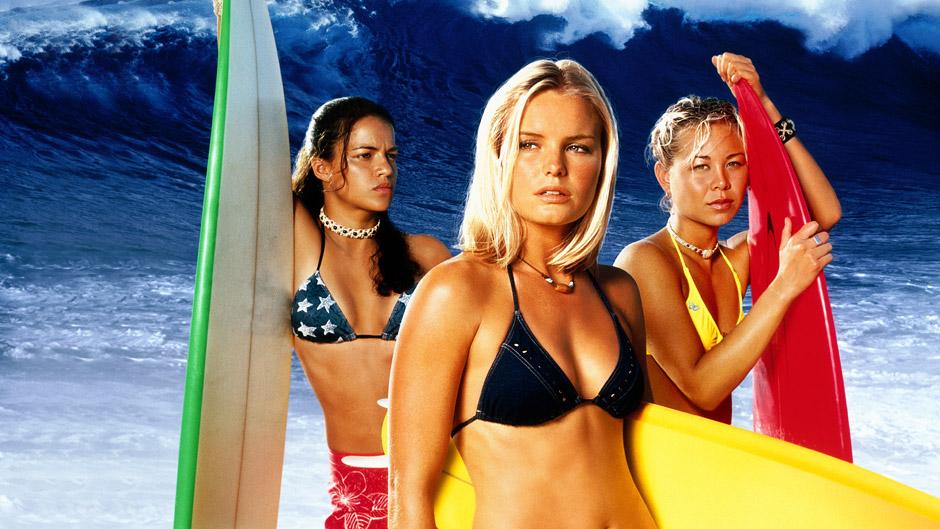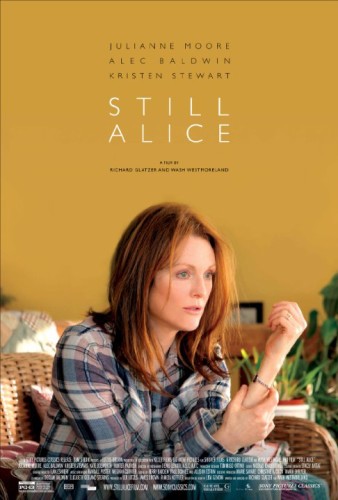
Written by Lisa Bolekaja.
I was the youngest person in the theater. And I’m grown.
Still Alice was not a movie on my radar. I heard that Julianne Moore put in an Oscar-worthy performance prior to her actually winning the award. It looked like one of those small art-house films that I normally adore, however the subject matter was not up my alley.
Four years ago I helped care for an older Aunt who suffered from dementia after living a remarkable life as one of the first Black nurses in the U.S. Navy. We had talked for years about me writing her life story. Her mind was sharp, she was proudly independent in her own home, and liked to take drives around town on her own and still traveled the world. She was proof that an unmarried, child-free, financially independent woman could live a full life despite what a sexist and racist society from her generation deemed socially acceptable. My Aunt Grace was in her 80s when she died. I endured her shockingly fast deterioration with my mother and sister. It was literally experiencing the invasion of a body snatcher who stole my amazing Aunt’s mind. Robbed her of all agency. So nah, watching a movie about a woman who suffers early onset Alzheimer’s was not on my list of Must-See-Movies.
My mother saw the trailer and was really curious. She is retired and often takes classes for retired persons to keep them active and to gain access to information to help them live full lives during retirement. Lately, she had been reading up on dementia and Alzheimer’s. She wanted to see the movie with me.
“Why do you want to see a movie that looks depressing?” I asked, trying to persuade her to watch something more entertaining. In reality, what I wanted to say was “Look, I don’t want to re-live Aunt Grace onscreen.” I eventually did say that out loud as we walked into a theater full of people that looked my mother’s age and older. I did a double take. I could not believe there was no one else there my age or younger inside the theater. I got the distinct impression that everyone wasn’t there just to be impressed with a tour de force performance or a brilliant plot. I listened to the whispers in the crowd before the preview trailers. Most of them I imagined (like my mother) were here to see what could happen to them. I felt like they were here to learn the warning signs. The anxiety in the room was that visceral.
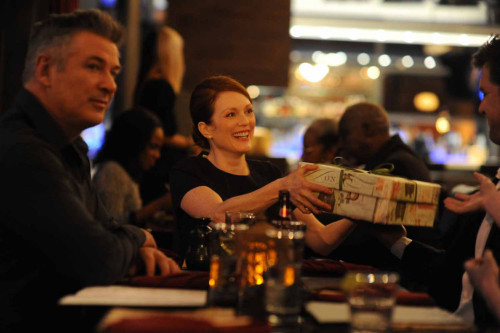
Because of that energy, my experience watching Still Alice was akin to viewing a horror movie. Going in we knew a horrible event awaited Alice Howland (Julianne Moore) before she did. And we, the audience, waited with bated breath for signs of the coming terror. Every minor occurrence in her life within the first 10 minutes was cause for anxiety. Every fumble of a word, every physical action Alice made that looked like a mistake caused my stress level to rise as the movie continued. I wondered if my stressful viewing would’ve been different if I hadn’t experienced the same drama that the Howland family goes through in the film. I wasn’t alone in my stress. My viewing audience gasped when Alice reintroduces herself to her youngest son’s girlfriend after meeting her five minutes previous. When Alice momentarily forgets where she is on her regular jogging route, a woman behind me said out loud, “Oh! She doesn’t know where she is already! Oh, no!”
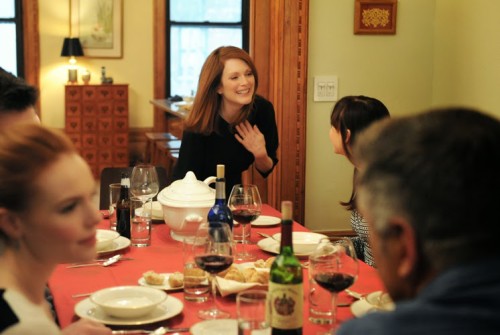
Still Alice unfolds in an episodic fashion. It is not interested in subplots, or melodramatic movie moments. It is a quiet film that builds on the rapid downward spiral of a successful linguist who has spent her entire life studying language and how the mind works with words, only to find herself losing the power of those words herself. In screenwriting circles this means she is the perfect character in which to explore this sudden change of events in her life with this disease. The film quickly runs through the basic plot drill of learning about the disease, disclosing this tragic news to her family and job, and then making the necessary lifestyle changes to prepare for the inevitable. Going in, it is obvious there will be no happy ending, nor even a satisfying resolution. Like real life, shit happens, and depending on where you are on the socioeconomic scale, your life choices can be limited or better than most.
In this case, Alice Howland has sufficient income from her own work as a linguist (she has seminal books written, she goes on speaking tours, etc.), as well as the income of her doctor husband John Howland (Alec Baldwin). Unlike most people, this upper income family has the best health insurance to see a specialist right away. They have the disposable income to survive without Alice’s salary after she leaves the career she loves, and they also have access to an in-home caretaker without changing any of their spending habits. There are no worries about losing their home, or even their second home near the beach. In fact, John is up for a prestigious new job with the Mayo Clinic, and the only downside is that they will have to move, which is a real concern for Alice’s condition. With Alzheimer’s, routine is very important. Familiar surroundings help people maintain security. Alec Baldwin is really good at conveying with his eyes alone the desire to thrive in his dream career, but also the pain of coping with and caring for his ailing wife, a woman who was an equal to his own brilliant mind. He wants to be there for her, but he doesn’t want his life circling around the drain too. To most, this might seem selfish, but it is a pressing issue and cause for real overwhelming angst.
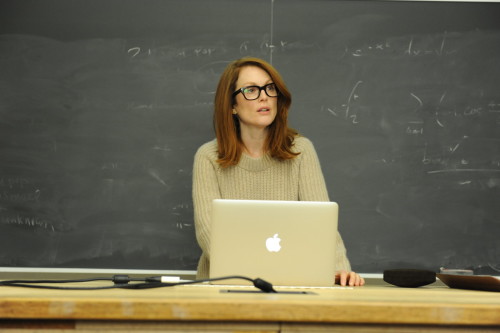
Until the end, Alice and John’s own adult children really don’t have to change their lives or routines because there is money to handle that. How different this story would be if there was no abundance of income. For average Americans, a serious illness ruins families forever. Jobs are lost, homes are foreclosed, and people become homeless or slip into poverty that they can’t escape from. Despite the horrible circumstances the Howland family finds themselves in, they have a safety net that can keep them together. Even with devastating pain, certain privileges will help certain families overcome challenges better than others.
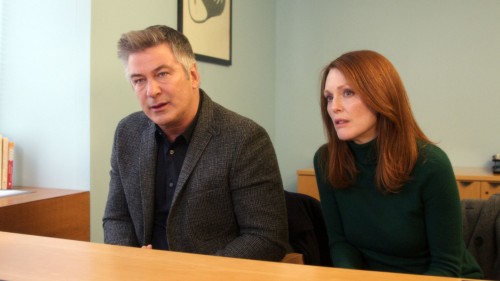
There is a poignant moment in the film where Alice, still in control of her mental faculties, makes a video for herself to watch when the time comes that she can no longer remember her name, her children’s names or even where she lives. In a rational and loving voice she tells her future self to swallow a bottle of pills and never tell anyone. She plans to kill herself when her mind betrays her. And there is a harrowing and quite dark comedic moment when the ailing Alice stumbles across the video and attempts to follow her own directions.
Alice tries her best to hide her condition. She is terrified of the stigma. She goes so far as to tell her husband that she wishes she had cancer instead, because people knew how to deal with cancer, and she would still have her mind. Her attempts to hide her illness at work backfires when her annual job evaluation reveals that her university students have raked her over the coals for being a terrible professor. Then and only then does she confide in her boss that she has Alzheimer’s. The look on her face as her boss comforts her says it all: this is the end of her life, the one anchor outside of her immediate family that held her in the fold of “regular Alice.” And let’s be honest, she’s right about the stigma. Our society still does not know how to deal with individuals whose minds seem to be turning against them. People struggling with mental health often feel like unwelcome pariahs around family and even close friends. When Alice’s youngest daughter Lydia (Kristen Stewart) asks her point blank, “What’s it like?” we can see Alice visibly relaxing as she tries to explain this frightening change to her sense of self. She thanks her daughter for not being too afraid to talk openly about it. Lydia appears to be the only person in the family dealing with Alice in the here and now. The rest of the family walk around on eggshells thinking of the old Alice and how she used to be, and also thinking about the problems they will deal with in the future, but always in the context of how it affects their personal lives.

The parting shots show Alice nearly a year later, sitting on her couch, oblivious to her family making plans for her future. John is moving for the new job. Once settled, he may or may not send for her. We hope so. There is reconciliation with Lydia who wants to be an actress in Hollywood which is the only real hiccup in Alice’s life before the progression of her disease. Alice has three happy, healthy, unbothered adult children. The fact that Lydia wants to be an actress and is pursuing her dream is such a petty thing for Alice to be concerned about. But appearances seem to be what she and her ice queen older daughter Anna (Kate Bosworth–with the best resting bitch face ever), live for. I guess everyone in this family is supposed to be a big impressive SOMEBODY in Alice’s eyes (Anna’s too). Lydia leaves L.A. to live at home for the sake of the rest of the family, (who continue to thrive unencumbered.) It is the free-spirit daughter who copes the best, and is the better person out of all the Howland clan to help Alice transition into this new life.
Sadly, writer/director Richard Glatzer died from Amyotrophic Lateral Sclerosis (ALS) on March 10, 2015, a month after Julianne Moore won her Oscar under his direction. I will miss his creative voice after being first introduced to his work with his spouse and collaborative film partner Wash Westmoreland through the film Quinceañera. He and Westmoreland have a body of work to be proud of.
Still Alice was not an easy film to watch and process. The audience (and my mother) didn’t seem pleased with the ending. I heard people murmuring “That was it?” as we left. “I thought there would be more,” my mother said. There was nowhere for it to go really. And that was the point. Enjoy and love your family while they are still capable of knowing you. Then love and enjoy them when they forget. They are still themselves, trapped inside their minds, doing their best to not be frightened of the changes. It taught me to be thankful that my own mother, also named Alice, is still here with me, pushing her own mind to keep learning and growing.
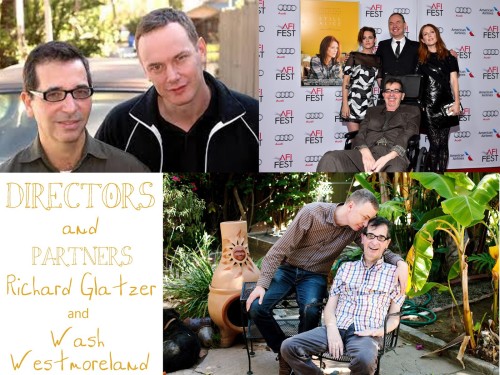
Professional raconteur and pop culture agitator, Lisa Bolekaja can be found on Twitter @LisaBolekaja or co-hosting on Hilliard Guess’ Screenwriters Rant Room (Stitcher and Itunes). Her latest short story can be found in the SF anthology How to Survive on Other Planets: A Guide For Aspiring Aliens from Upper Rubber Boot Publications.
